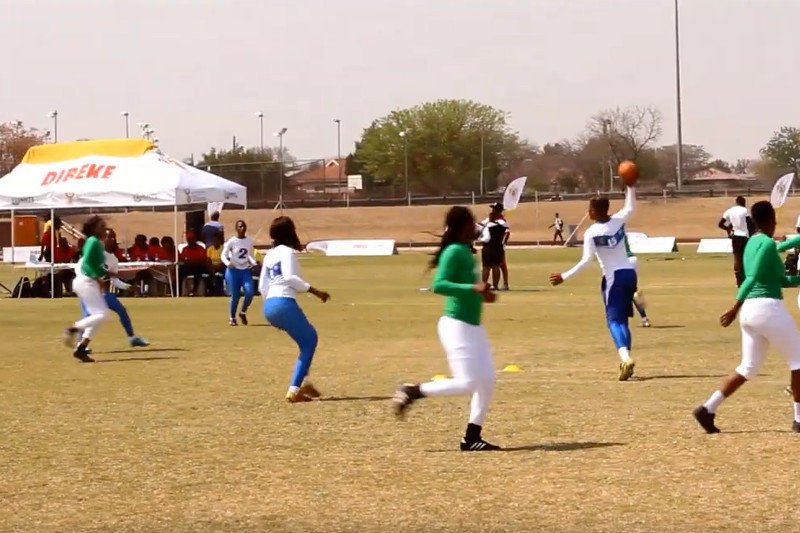Dibeke, a dynamic multi-running ball game rooted in South Africa, serves as a remarkable example of how sports can transcend mere recreation to cultivate community spirit and promote gender equality through mixed-gender teams. Played on a defined pitch, the game’s strategic subtleties require a blend of skill and teamwork, making it not only engaging but additionally culturally significant. As we investigate its rich history and the various elements that contribute to its unique character, one might ponder how such an inclusive sport can influence social dynamics in contemporary settings.
History of Dibeke
The history of Dibeke reveals a sport that has ingrained itself into the cultural fabric of South Africa, enchanting the youth with its addictive nature. While the precise origins of Dibeke remain elusive, oral traditions suggest that the name itself emerged as a descriptor of the game’s enthralling appeal. This multi-running ball game, known as Nikkies, Skaloulo, and Kimberley Jim, is played by two teams of twelve, nurturing a vibrant community spirit.
Dibeke promotes gender equality, as teams must consist of an equal number of boys and girls, reflecting a progressive ethos within the game’s structure. This unique aspect not only empowers participants but additionally establishes a foundation of mutual respect and cooperation among players. In spite of the lack of extensive historical documentation, efforts are underway to preserve and celebrate Dibeke as a vital element of South Africa’s indigenous culture.
The game’s enduring popularity among the youth speaks to its ability to transcend mere recreation, offering a platform for social interaction, teamwork, and healthy competition. In this way, Dibeke continues to inspire freedom and camaraderie, ensuring that its legacy will be cherished for generations to come.
Essential Gear for Dibeke
Equipping players with the right tools is fundamental to guaranteeing a successful and organized game of Dibeke. The choice of equipment directly influences the dynamics of the game and the players’ performance. Each tool serves a specific purpose, enhancing the overall experience and maintaining fairness on the field.
To effectively promote a game of Dibeke, the following equipment is vital:
- Balls: A size 3 leather ball for seniors and a size 1 leather ball for juniors guarantee that players of all ages can participate comfortably.
- Stopwatches: Two stopwatches are significant for timing the game, allowing for an accurate measure of each phase.
- Scoreboards: Two scoreboards displaying numbers 1 to 20 help track points clearly, guaranteeing transparency in scoring.
- Field Marking Supplies: Lime and a 30-metre measuring tape are required for delineating the playing field, establishing boundaries that are paramount for gameplay.
Additional items like a whistle for the match facilitator, cards for officiating, and hand flags for linespersons contribute to the game’s integrity, allowing players to fully enjoy the freedom of play.
Game Duration: Flexibility in Dibeke Play
While the official duration of a game of Dibeke is set at 80 minutes, divided into two halves of 40 minutes each, the flexibility of informal play allows teams to negotiate their own game length. This adaptability is one of the sport’s most appealing features, nurturing a sense of community and camaraderie among players. Teams can engage in spirited discussions to determine a duration that suits everyone’s preferences, ensuring that the game remains enjoyable and inclusive.
During official matches, a half-time break of no more than 10 minutes is observed, allowing players to regroup and strategize. On the other hand, in informal settings, teams may choose to extend or shorten this interval as they see fit, promoting a relaxed atmosphere. This autonomy in deciding game length and rest periods reflects the spirit of freedom that characterizes Dibeke.
Ultimately, the game’s duration is not merely a matter of timekeeping but an expression of the players’ desires and agreements. Whether in a structured match or a leisurely pickup game, Dibeke thrives on the principle that enjoyment and fair play should always take precedence, granting everyone the opportunity to engage in the sport on their own terms.
Dibeke Pitch
A well-defined play area is fundamental to the game of Dibeke, ensuring that players can engage in both competitive and informal matches effectively. The specifications of the pitch are essential for the integrity of the game, providing a clear structure within which players can showcase their skills.
The play area encompasses several key features:
- Dimensions: The pitch measures approximately 60m long by 40m wide, with a white line marking the borders.
- Extended Play Area: A 10m buffer zone around the borders allows for dynamic play and movement, preventing players from colliding with boundaries.
- Center Circle: A 1.5m radius center circle divides the pitch, facilitating organized gameplay during attacks and defenses.
- Attackers’ and Kickers’ Boxes: Two attackers’ boxes (10m x 5m) and a kicker’s box (1.5m x 5m) are designated areas for strategic plays, ensuring a structured attack during the game.
These elements collectively contribute to the exhilarating experience of Dibeke, allowing players the freedom to express themselves while adhering to the rules of engagement.
Team Structure in Dibeke
In Dibeke, the structure of teams plays a significant role in the dynamics of the game. Each match comprises two teams, each consisting of 12 players, evenly split between six males and six females. This gender balance not only encourages inclusivity but also improves the collaborative spirit fundamental for success. Every team designates a captain who acts as the primary liaison with the match facilitator, ensuring smooth communication throughout the game.
Moreover, each team appoints a scorekeeper responsible for tracking individual and team runs. This role is vital, as accurate scoring can influence strategies and outcomes. The game alternates between attacking and defending roles, allowing players to showcase their skills in varied capacities. The defenders include a designated ‘roller’ who initiates play by rolling the ball and calling out the letters corresponding to attackers’ jerseys. This process culminates in selecting a ‘kicker’ who attempts to propel the ball into play, setting the stage for dynamic interactions.
The structured yet flexible nature of team roles in Dibeke not only improves gameplay but also nurtures camaraderie and competition, fundamental components that enthrall players and spectators alike.

How Dibeke is Played?
Dibeke is structured around a unique gameplay mechanism that emphasizes coordination and strategy between attackers and defenders. Engaging two teams of twelve players, the game operates with alternating roles of attack and defense. The captains determine the roles through a coin toss, setting the stage for tactical maneuvers.
At the beginning of play, the roller initiates the action by calling out the letter of an attacker, rolling the ball towards them. The dynamics of the game unfold as follows:
- Attackers’ Initiative: The attacker kicks the ball beyond the centre line and races to the attackers’ box, while their teammates can assist in the run.
- Defenders’ Reaction: The defenders aim to retrieve the ball and eliminate attackers by hitting them with the ball.
- Safety Zones: Attackers are safe when inside the attackers’ box, allowing for strategic pauses.
- Round Transition: Once all attackers are out, teams switch roles, promoting a seamless flow of competitive spirit.
Through this engaging and strategic structure, Dibeke captures the essence of teamwork and exhilarating action, inviting players to undergo the thrill of freedom on the field.
Rules of Dibeke
The rules of Dibeke are fundamental for maintaining the integrity and flow of the game. Key aspects include scoring mechanisms, conditions for a win, and protocols for fouls or penalties, in addition to guidelines for player substitutions. Understanding these rules is vital for players and officials alike to guarantee fair play and competitive spirit.
Scoring System in Dibeke
Although scoring in Dibeke may seem straightforward, it involves a series of specific rules that dictate how teams can accumulate points during the game. The dynamic nature of Dibeke guarantees that both attacking and defending teams have clear pathways to score.
Here are the key scoring rules:
- Attacker’s Run: An attacker scores 1 run by safely reaching the opposite attacking box without being hit by the ball.
- Team Runs: When an attacking team member accumulates 20 runs, the team is awarded 2 points, and eliminated attackers return to the home box for the next round.
- Defender’s Elimination: The defending team scores 1 point if all players of the attacking team are eliminated, prompting a rotation of roles.
- Short Runs: A short run occurs when an attacker fails to cover the full length of the field. The match official will declare this, cancelling any previously counted runs by that attacker.
Understanding these scoring rules increases appreciation for the strategy and skill involved in Dibeke, allowing players and spectators alike to engage with the game on a deeper level.
Determining Victory in Dibeke
Achieving victory in Dibeke hinges on the team’s ability to navigate the game’s intricate rules and execute strategies effectively. The objective is straightforward: the team with the highest score at the end of the allotted playing time wins. Success in this dynamic multi-running ball game requires both skillful execution and strategic planning.
To accumulate points, attackers must kick the ball beyond the center line and into the defenders’ area. Nevertheless, there are critical conditions that can lead to elimination. An attacker is considered out if they fail to kick the ball past the center line, or if they are struck by a defender’s ball while outside their designated box. Furthermore, an attacker who misses the ball three times in a row is likewise eliminated.
A complete team elimination occurs when all attackers are hit or if their kicked ball is caught mid-air. Thus, maintaining awareness of both offensive and defensive plays is vital for avoiding these pitfalls. By mastering the rules and working in unison, teams can strategically position themselves to improve their chances of victory in this exhilarating game.
Consequences of Rule Violations in Dibeke
In Dibeke, upholding fair play is essential, and any breach of the rules can lead to penalties that may influence the game’s result. Adhering to these guidelines ensures the game is played in the right spirit, allowing all participants to engage in a competitive yet respectful environment. Violations can result in two types of cards: red cards and yellow cards.
A red card is a serious consequence, resulting in a player’s suspension for the entire match. It is typically issued for severe infractions, such as instigating unrest among players or fans, physically or verbally assaulting match officials or others, or demonstrating disrespectful attitudes towards opponents based on gender.
On the other hand, a yellow card acts as a caution, leading to a player’s suspension for the current round if they commit certain offenses. These include obstructing another player during the game, questioning a match official’s decisions (unless the player is the team captain), or delaying the ball throw while an attacker is in motion.
Additional general fouls can also incur penalties. For instance, a player from the attacking team who fails to complete a proper run will lose all runs earned, save for the last one. Furthermore, a roller will be substituted if they fail to roll the ball correctly—either by sending it outside the designated area or lifting it into the air—after three unsuccessful attempts. These rules underscore the importance of respect and sportsmanship, which are crucial to the integrity of Dibeke.
Substitution Rules in Dibeke
In Dibeke, the substitution rules are designed to guarantee a smooth flow of the game while allowing teams to adapt their strategies as needed. This flexibility is vital for maintaining the dynamic nature of the sport, which thrives on the energy and creativity of its players.
Teams are permitted an unlimited number of substitutions throughout a match, enabling coaches to rotate players effectively. Nevertheless, to assure fairness and order, no more than three substitutes can be on the field simultaneously. This rule guarantees that teams do not overwhelm their opponents with fresh legs, preserving the competitive balance.
The timing of substitutions is likewise regulated; a player may not be substituted within three minutes of the last change. This restriction is important for maintaining the game’s rhythm, preventing disruptions that could alter the course of play. Additionally, the match facilitator and scorekeepers meticulously document all substitutions, assuring transparency and accountability within the game.

